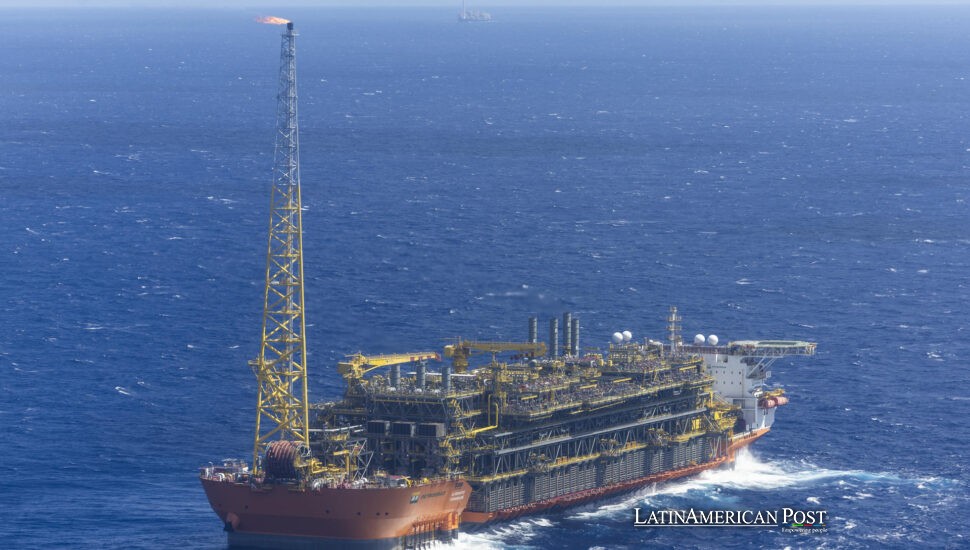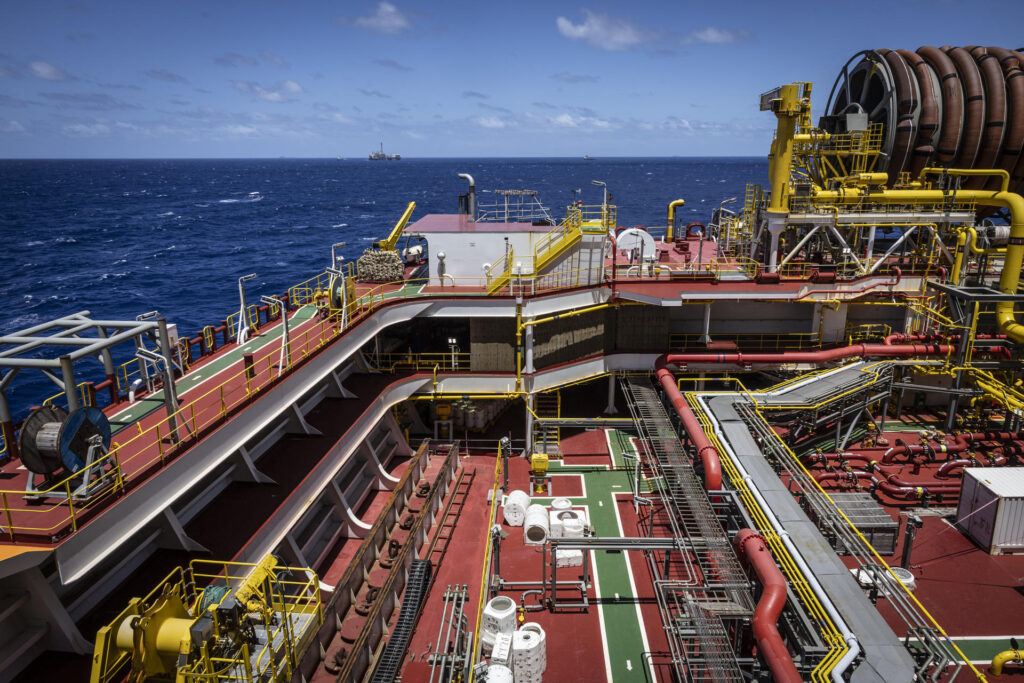Brazil’s Floating Giant: The Almirante Tamandaré Redefines the Deepwater Frontier

From the air, it looks like a mirage—a metallic city adrift on the Atlantic, its deck lights glinting where the ocean fades into the horizon. The FPSO Almirante Tamandaré, Petrobras’s newest floating production unit, is no ordinary ship. It’s a 351-meter-long, 180-meter-tall refinery at sea, anchored above the legendary Búzios pre-salt field, some 180 kilometers off Rio de Janeiro. And in a feat that stunned even Petrobras’s veterans, it has already shattered every record the company set for deepwater production.
A Floating Factory on the Atlantic Horizon
Seen from a helicopter window, the Tamandaré looks more like a floating skyline than a vessel. Massive cranes and flare towers pierce the mist, while a grid of pipes, separators, and compressors turns sunlight into reflections of gold. It is one of the five largest FPSOs on the planet, a ship that eats crude and breathes gas.
Since February, it has moved through its commissioning at a pace that engineers still describe with disbelief. Designed to handle 225,000 barrels of oil and 12 million cubic meters of gas a day, it reached its target by mid-August—and then kept climbing. By October 9, the platform was pumping 250,000 barrels a day, roughly 8% of Brazil’s entire output.
To live aboard is to inhabit a frontier. About 180 crew members sleep, eat, and work in stacked decks that hum around the clock. They call it a village: a place where the air smells of salt and hydrocarbons, where time bends between 12-hour shifts, and where the horizon is a straight line of steel.
“The platform reached initial capacity on August 14 with just five of its eight producing wells connected—three months ahead of schedule,” operations manager Pedro Carrião told EFE. The reservoir, he said, has been “kinder than the models predicted.” When all eight wells are online, the FPSO could set a new record.
Pushing Beyond Nameplate Capacity
The Tamandaré’s speed tells a story of both engineering and geology. Beneath its hull lies a treasure that rewrote Brazil’s destiny—the pre-salt. Two kilometers of dense rock and ancient salt entomb vast, pressurized pools of light oil. Drill through the barrier, and the hydrocarbons surge upward with a steadiness that makes risk feel like reward.
There are limits, of course. The vessel’s storage tanks hold about two million barrels, meaning higher production demands a tight ballet of shuttle tankers to offload crude. Regulatory clearance is also required before Petrobras can sustain output above the FPSO’s rated design. Carrião acknowledged those hurdles but noted another record: “While a few platforms worldwide produce similar oil volumes, none match our daily natural-gas capacity.“
That detail matters. As the world searches for lower-carbon energy, the ability to process and reinject vast volumes of gas gives Brazil’s pre-salt an environmental and commercial edge. Every cubic meter captured and used is one less flared to the wind.
Inside the World’s Hottest Deepwater Field
The coordinates under Tamandaré mark the epicenter of global deepwater ambition. The Búzios field is the crown jewel of the Santos Basin and the most significant offshore development ever attempted. Operated by Petrobras, with partners CNOOC and CNODC, it already supplies nearly one-third of Brazil’s oil. On the same day Tamandaré broke its own record, the six platforms at Búzios collectively delivered 900,000 barrels a day, propelling Petrobras to an all-time high.
The story of Búzios is equal parts geology and policy genius. The geology gifted Brazil with reservoirs of rare quality—thick, high-pressure, low-impurity oil sealed under a prehistoric salt crust. The policy ensured the country built the expertise to reach it. Two decades of investment in deepwater technology, shipyards, and local content transformed Petrobras into one of the most capable offshore operators on Earth.
And the horizon keeps expanding. Petrobras plans six more FPSOs for Búzios alone—three of them sister ships to Tamandaré—each costing around $8 billion. By 2030, production from the field is expected to reach 1.5 million barrels per day, nearly half of Petrobras’s current total. It’s a trajectory that could lift Brazil to the world’s top five oil producers, a rise built on both resilience and precision.

From Record Numbers to National Ambition
For all its staggering dimensions—the 351-meter hull, the gas capacity of a small nation, the 8% share of national production—the Tamandaré’s meaning runs deeper. It proves that speed need not compromise safety and that a country once reliant on imports can now command the deep ocean.
Yet every record brings its questions. How do you turn this surge of wealth into a durable public benefit? How do you pace expansion through volatile oil cycles? How does a producer known for crude exports balance that with domestic gas demand and global climate pressure?
Carrião doesn’t speak in abstractions. From his control room, the screens glow with pressure readings and flow rates that hint at new limits. “With the field behaving as it is,” he told EFE, “we are confident about going further once all producers are connected.“
That confidence reverberates beyond the ship. Petrobras’s tender lists read like a shipyard manifesto, with fabrication yards in Brazil and Asia building new hulls meant to live 25 years at sea. Each FPSO is not just hardware—it’s a vote of belief in the pre-salt’s longevity and Brazil’s mastery of deepwater science.
For the crew aboard Tamandaré, that faith takes physical form—helicopters arc across the waves, ferrying shifts of workers to and from the coast. Tankers queue alongside, siphoning off another million barrels. Below the deck, turbines roar and compressors hiss, feeding a machine that never sleeps.
Somewhere two kilometers down, through salt and sediment older than the Amazon, the reservoir keeps sending up its whisper—a steady pulse of pressure and promise. From that pulse, Brazil is writing its next energy chapter: one forged in steel and salt, in human skill and patient daring.
Also Read: Chile’s Endangered Andean Cat Meets the Weight of Copper Dreams
The Almirante Tamandaré was built to test the limits of deepwater engineering. Barely a year after its first oil, it has already rewritten them, proving that what once looked like the horizon is merely another milestone on Brazil’s long voyage toward energy independence.





